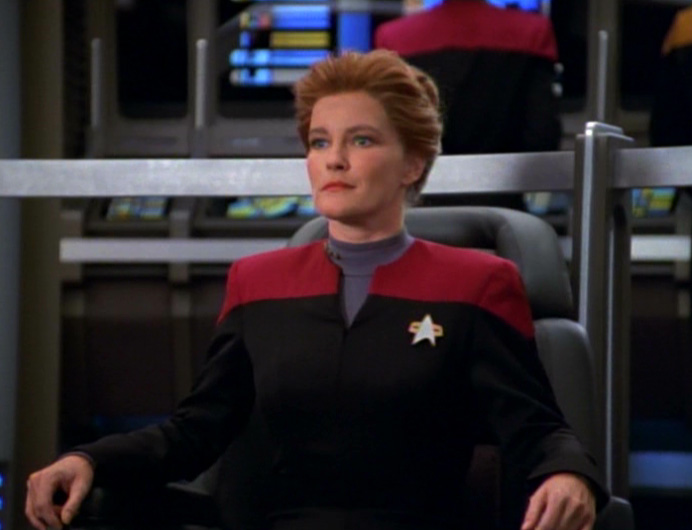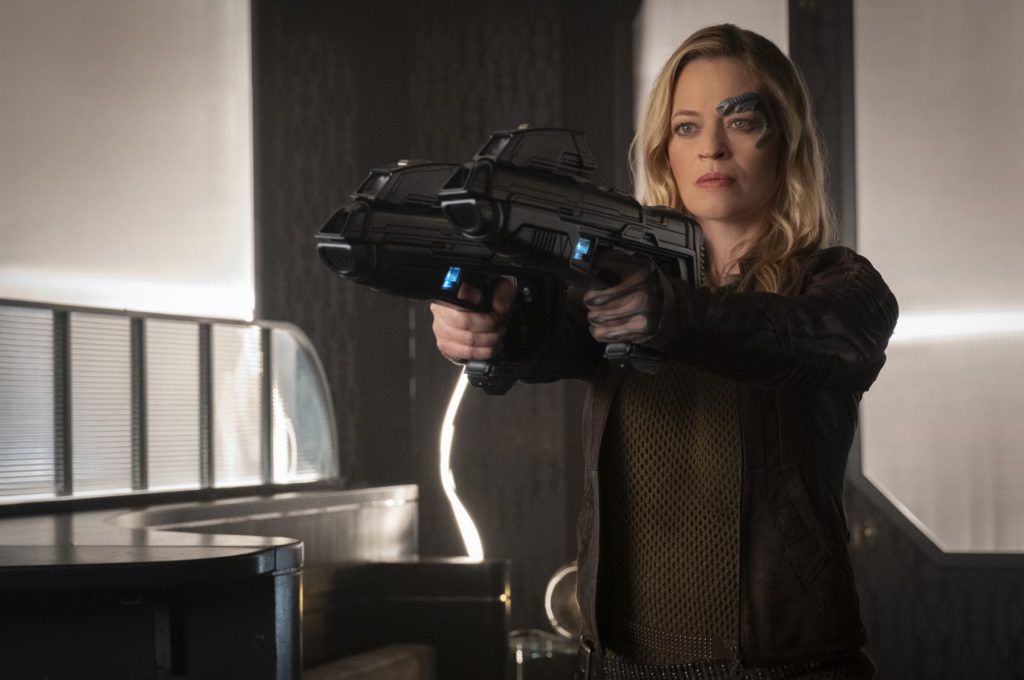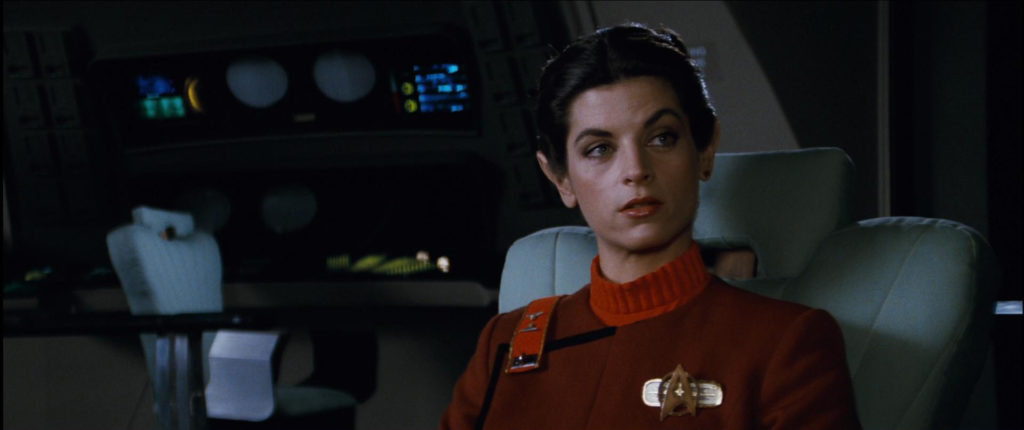
One of the things I, and a lot of other people, like about Star Trek is the diversity in the crews. As a Black man I know how important representation is in pop culture. But aside from the warm, fuzzy feelings of seeing yourself on screen, diversity is important for another reason: it makes us stronger. Just as women in combat positions in the modern military have made the military stronger, not weaker, having women in the captain’s chair in Star Trek ensures that all Starfleet captains are highly qualified.
I never understood why people hated on a female captain when Voyager came out. Do they not know strong, capable women? I know a woman that Captain Janeway could be based on. She flew Apache helicopters, led an aviation battalion on a deployment to Afghanistan and at the end of her career, she was investigating generals for wrongdoing. Smart, strong, honorable, capable and while she was never one of my commanders, I would’ve followed her without question.
A few things happened to ensure the addition of women in combat roles made the military stronger. To start, the leadership made and enforced a gender-neutral standard. Next, standard bearers for women in combat ensured only qualified applicants moved forward to be among the first women in various roles. The firsts enforced the standards and, after enough firsts, it stops mattering.
I’m an Army veteran and when I was infantry, I had heard many arguments for and against women in command and combat. In my experience, the detractors for women in combat can be broken into two camps. Mediocre men, and those who worry about a lower standard putting unqualified soldiers in the field and their fellow soldiers’ lives at risk. The solution was simple; an enforced gender-neutral standard. An enforced standard will usually weed out the former and satisfy the latter.
So to silence detractors, the military set and enforced gender-neutral standards and let qualified women apply. For the Marine Corps, this meant an Infantry Marine would have to complete a 20km road march with full pack and gear before graduating training. One thing they discovered is that creating and enforcing a strict standard resulted in fewer male Marines getting to the fleet unable to do the job, thereby having to be reassigned to other jobs. Instead of weakening the Corps; creating the opportunity for women made for a stronger force by not passing mediocre Marines who shouldn’t have been in combat jobs anyway.

Seven of Nine is one of many Star Trek characters who demonstrates the capability of women in combat
Once the advocates for women in combat and command set the standard, it allowed for the firsts. The best argument for women in combat is the Army Ranger School, which opened to women in 2015. Not only has their gender-neutral standard been well-defended by the instructors, but the other candidates have confirmed that the school has not gotten any easier since allowing in women. Tragically, last month, a Ranger School candidate died (this is rare, but not unheard of).
Early female Ranger School graduates are the greatest advocates for maintaining a high standard. Capt. Shania N. Coss is one of the first 10 females to earn a Ranger Tab. She was the first woman to join the 75th Ranger Regiment, where she was an infantry platoon leader and deployed with the regiment to Afghanistan. Last month she wrote an op-ed for Military.com titled “The Army Infantry Doesn’t Just Need More Women. It Needs More Qualified Women.” She stated that the Army needs to reverse its decision that lowered the standards on the Army Combat Fitness Test (ACFT) and to return to the previous, more difficult standards. She argued that changing the standards was a shortsighted reaction, illogical, degrading to all women and disproportionately harmful to women in the infantry.
Other firsts for women include Capt. Emily Lilly, the oldest woman and first National Guard woman to graduate from Ranger School. 2018 was a year for firsts with the first Latina, Melissa Vargas; the first enlisted woman, Staff Sgt. Amanda Kelly; and Sgt. 1st Class Janina Simmons as the first African American woman to earn the Ranger Tab. Once we get past the firsts, it stops being something people talk about. Firsts are remarkable, eighths are not. In the six years since women have been allowed to attend Ranger School, at least 50 have completed the course. In the military circles I travel in, it is no longer a topic of conversation.

Saavik takes the Kobiyashi Maru test Star Trek II: The Wrath of Khan.
What does this have to do with Star Trek? It shows that if Starfleet is our future, women will have proven capable of combat and command long before those days come. Gender neutral standards will be the norm. There won’t be separate versions of the Kobayashi Maru for men and women: the no-win scenario test is already gender neutral.
Like modern day battlefields, most battles in Star Trek are not fought on clear front lines. Just by being on a starship, as on deployment in our world today, women will be in combat. By the time Jean-Luc plants himself in a captain’s chair, there will have been many first women in human history and in Starfleet. So many, that it will no longer a consideration. Maintaining the high standards lets us know that not only is Picard a capable and qualified captain, but so is Janeway.